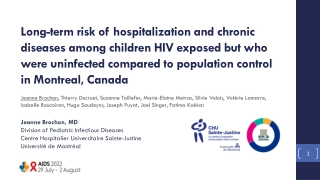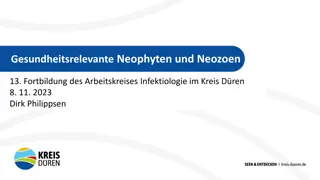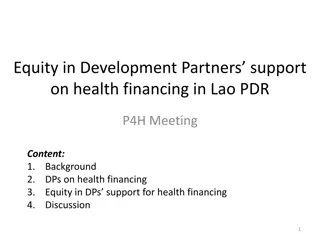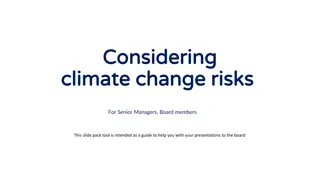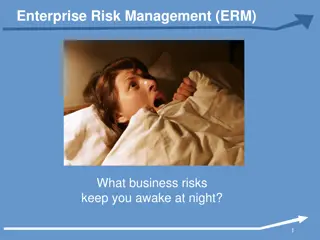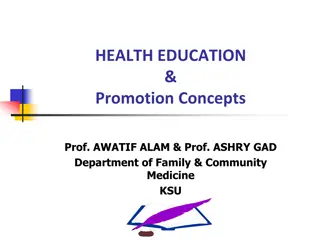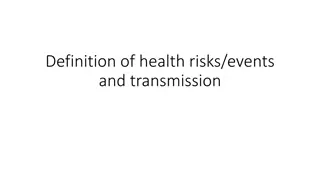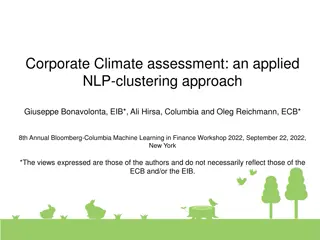
Common Health Issues Overview: Heart Disease and Beyond
Explore the common health issues affecting different systems: Heart Disease (like Atherosclerosis, Hypertension), Immune System (Allergies, Autoimmune Diseases), Respiratory System (Asthma, Bronchitis), Digestive System (Gallstones, Ulcers), and Nervous System (Parkinson's Disease). Understand their symptoms, causes, and treatments in this informative guide.
Download Presentation

Please find below an Image/Link to download the presentation.
The content on the website is provided AS IS for your information and personal use only. It may not be sold, licensed, or shared on other websites without obtaining consent from the author. If you encounter any issues during the download, it is possible that the publisher has removed the file from their server.
You are allowed to download the files provided on this website for personal or commercial use, subject to the condition that they are used lawfully. All files are the property of their respective owners.
The content on the website is provided AS IS for your information and personal use only. It may not be sold, licensed, or shared on other websites without obtaining consent from the author.
E N D
Presentation Transcript
- -Heart Disease include the following Heart Disease include the following conditions: #1 leading cause of death conditions: #1 leading cause of death in adults (in America). in adults (in America). - -Atherosclerosis: hardening and narrowing Atherosclerosis: hardening and narrowing of an artery. of an artery. - -Hypertension: High Blood Pressure (force Hypertension: High Blood Pressure (force of blood against the artery walls). of blood against the artery walls). - -Arrhythmia: Abnormal heart rhythm. Arrhythmia: Abnormal heart rhythm. Either too slow, too fast or irregularly. Either too slow, too fast or irregularly. Brady= (less then 60 Brady= (less then 60 bpm (more than 100 (more than 100 bpm bpm) ) CARDIOVASCULAR SYSTEM: bpm) ) Tachy Tachy= = Treatment: Stent/Angioplasty or bypass Treatment: Stent/Angioplasty or bypass surgery (CABG) surgery (CABG)
ISSUES WITH THE IMMUNE SYSTEM Allergies: Immune response to substances that are Allergies: Immune response to substances that are usually not harmful. usually not harmful. Autoimmune Disease: Immune System attacks your own Autoimmune Disease: Immune System attacks your own body s cells and tissues by mistake. body s cells and tissues by mistake. Examples: Examples: Celiac (can t tolerate gluten) the I.S. responds by Celiac (can t tolerate gluten) the I.S. responds by damaging the lining of the small intestines. damaging the lining of the small intestines. Diabetes: attacks cells that make insulin. Diabetes: attacks cells that make insulin. Multiple Sclerosis (MS): I.S. attacks the protective Multiple Sclerosis (MS): I.S. attacks the protective coating around nerves. Affects brain and spinal cord. coating around nerves. Affects brain and spinal cord.
COMMON ISSUES WITH THE RESPIRATORY SYSTEM * Asthma wheezing and breathlessness caused by a narrowing of the airways. * * B Bronchitis ronchitis inflammation of the lung's mucous lining. * Emphysema * Emphysema destruction of the alveoli (air sacs). * * COPD COPD- Chronic Obstructive Pulmonary Disease.
DIGESTIVE SYSTEM 1. 1. Gallstones Gallstones: (gallbladder secretes bile for : (gallbladder secretes bile for digestion) hard deposits that block duct digestion) hard deposits that block duct leading to your intestines. leading to your intestines. 2. 2. Ulcers: Ulcers: open sores that eat away at the open sores that eat away at the lining of the digestive system. lining of the digestive system. 3. 3. Hemorrhoids: Hemorrhoids: inflammation of the blood inflammation of the blood vessels at the end of your digestive tract. vessels at the end of your digestive tract. Hemorrhoidectomy Hemorrhoidectomy (removal) 4. 4. Diverticulitis: Diverticulitis: small pouches called small pouches called diverticula can form anywhere diverticula can form anywhere- -weak spots. Surgery to remove diseased part of the Surgery to remove diseased part of the colon. colon. 5. 5. Colon Cancer: colonoscopy (age 50) to Colon Cancer: colonoscopy (age 50) to check for ad. Cells. check for ad. Cells. (removal) weak spots.
NERVOUS SYSTEM ISSUES Parkinson s Disease: problem with the nerve cells in brain that Parkinson s Disease: problem with the nerve cells in brain that control movement. Symptoms are shaking (tremor), stiff muscles control movement. Symptoms are shaking (tremor), stiff muscles and slow movements. May cause problems with balance, and slow movements. May cause problems with balance, confusion and memory loss. confusion and memory loss. ALS: (Amyotrophic lateral sclerosis) aka Lou Gehrig s disease is a ALS: (Amyotrophic lateral sclerosis) aka Lou Gehrig s disease is a progressive wasting away of nerve cells in the brain and spinal progressive wasting away of nerve cells in the brain and spinal column that control the muscles that allow movement. column that control the muscles that allow movement. ***Symptoms: muscle weakness, inability to control movements, ***Symptoms: muscle weakness, inability to control movements, problems speaking, swallowing and breathing. problems speaking, swallowing and breathing.
MUSCULAR SYSTEM ISSUES Sprain (ligaments) vs. Strain (muscles or tendons): Twist or pull a Sprain (ligaments) vs. Strain (muscles or tendons): Twist or pull a muscle vs. tendon. RICE (Rest, Ice, Compression and Elevation) muscle vs. tendon. RICE (Rest, Ice, Compression and Elevation) Tendon attaches muscle to bone. Tendon attaches muscle to bone. Ligament attaches bones to bones. Ligament attaches bones to bones. Compartment Syndrome: The blood vessels, muscles and nerves Compartment Syndrome: The blood vessels, muscles and nerves get compressed in a closed area, which cuts off oxygen supply. get compressed in a closed area, which cuts off oxygen supply.
URINARY SYSTEM UTI- - (Urinary Tract Infection) Bacterial (Urinary Tract Infection) Bacterial infection in the bladder infection in the bladder- -to kidneys. Women more prone because of smaller Women more prone because of smaller urethra (quick access to bladder). urethra (quick access to bladder). Kidney Stones: Kidney Stones: Clumps of calcium because of chemicals in urine become concentrated enough to form a solid mass. UTI to kidneys. Symptoms: Symptoms: - -Burning while Burning while u urination - -Frequent or intense to urinate Frequent or intense to urinate - -pain/pressure in back or lower abdomen pain/pressure in back or lower abdomen - -Cloudy, dark, bloody or strange Cloudy, dark, bloody or strange- -smelling urination. urination. - -Fever or chills (sign of infection) Fever or chills (sign of infection) Kidney Failure: Kidney Failure: (AKA renal) ) inability to filter waste from blood. Dialysis or transplant. rination smelling RX? Antibiotics RX? Antibiotics
SKELETAL SYSTEM ISSUES Know the different types of fractures:
MALE/FEMALE REPRODUCTIVE ISSUES Male: Male: Hypospadias Hypospadias- - external external urethral opening opens urethral opening opens anywhere below the tip anywhere below the tip of the penis (rather of the penis (rather then tip) then tip) Female: - -Endometriosis: Endometriosis: lining of the uterus grows elsewhere. Can cause fertility problems. -PID PID- Fallopian tubes become swollen leaving scar tissue. Can be complication of STI s and can lead to permanent sterility (no babies). Hydrocele Hydrocele- - fluid dilled sac fluid dilled sac surrounding the testis. surrounding the testis. (surgically corrected) (surgically corrected)

